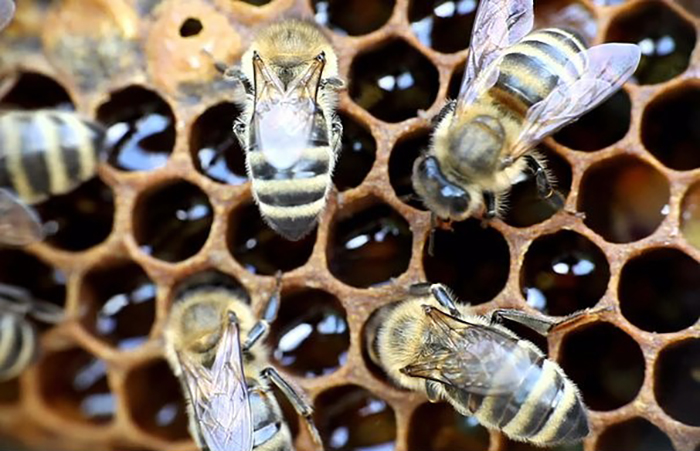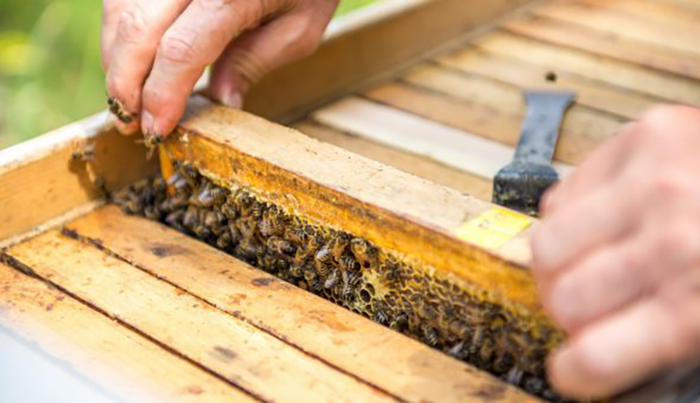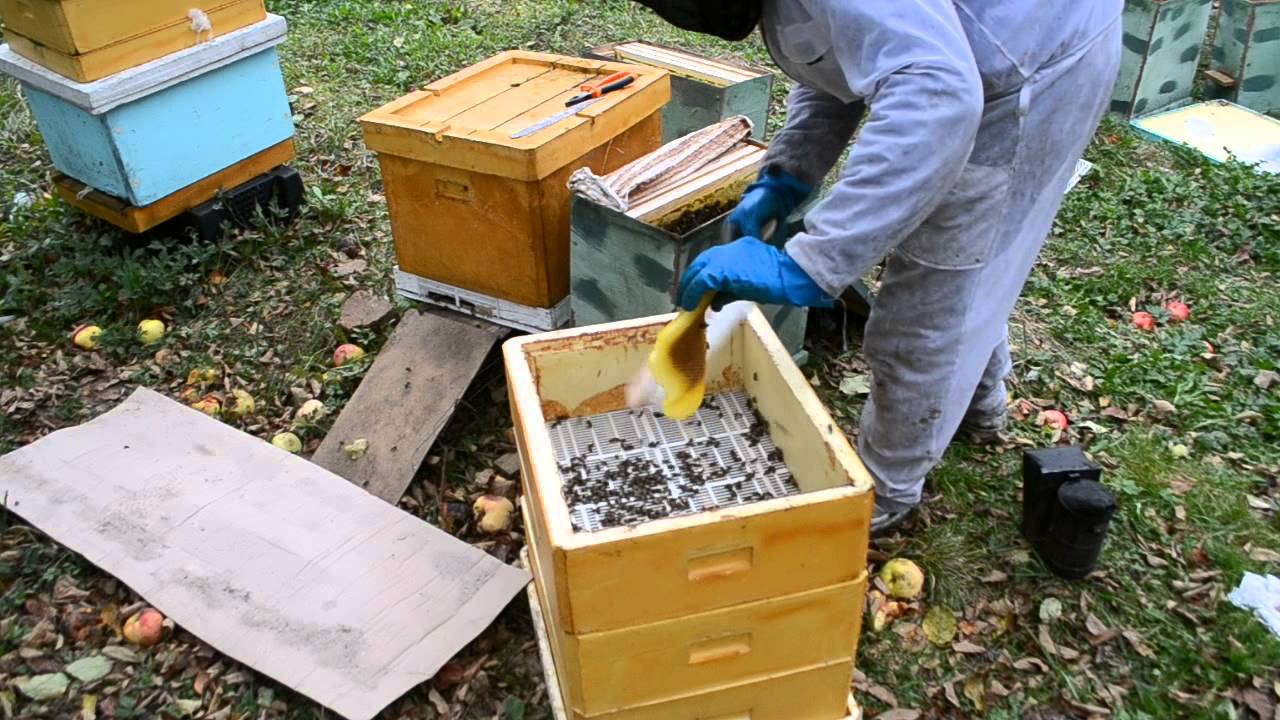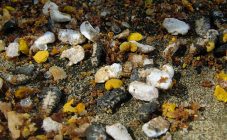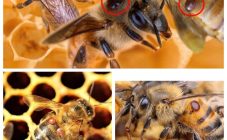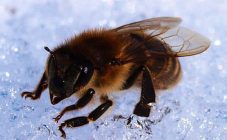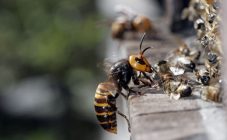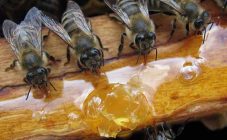Content:
After the completion of the collection of honey, the number of bees decreases significantly, they die. The birth of young bees in the fall gives way to the extinction of the summer Hymenoptera. It is important for the beekeeper not to miss a convenient moment, the autumn build-up of bee colonies before wintering is appreciated.
How to grow bees in the fall
Young autumn individuals, in comparison with spring and summer ones, contain a lot of fats, protein and other useful elements. Bees that did not feed the offspring and did not collect food reserves winter well. Therefore, the beekeeper needs to keep only strong bee colonies in the apiary. Fertilized queens are valuable in winter, their age determines the cessation of oviposition. It is advisable for strong families to winter, which will cover 9-10 frames.
It will be necessary to take the Hymenoptera to the last stimulating honey harvest, when the daily weight gain will be from 100 to 300 g. The queens will start intensive laying.
In the absence of the possibility of leaving for honey collection late in the fall, sugar is used for feeding. The bees, which hatched in August after the main harvest, tolerate the winter well.
Insects born in summer usually do not live until spring. It is difficult for bees to go into winter, which hatched later, but could not fly around before frost. It is useful for beekeepers to roughly navigate how and when they grow bees in the fall. You will need to stop in 3 weeks all the procedures that were carried out to increase the clutch. To increase the number of autumn bees, old queens are used after collecting honey, which are transplanted into layers, then settled in weakened families. Reception allows alignment of bee colonies.
Terms are calculated from:
- the approximate date of the end of the active period of bees in the area;
- the formation cycle of individuals from egg-laying to the removal of the bee from the cell (on average 21 days);
- the duration of their physiological preparation for winter conditions (at least 27 days).
In the central zone of Russia, the development process of young winter Hymenoptera falls at the end of summer-September, in the south it is usually 3 or 4 weeks later. It is undesirable to activate the growth of bees later - this weakens the physiological preparations for wintering.
Late laying of eggs does not justify itself in regions where bees cannot make a cleansing flight. The hymenoptera, which go with crowded intestines in winter, keep anxiously, disturb the bee colony, and most of them die before spring arrives.
July 20 - the beginning of the growth of bees. If the average clutch of the uterus is 1000 larvae per day, 30,000 young individuals (10-12 streets) will grow over the period.
How to grow a bee colony in August
Bee colonies that hibernate with numerous young insects (hatching in August and September) endure the winter with ease.
Hymenoptera differ in the spring season:
- strength, ability to work excellently on early honey grasses;
- replenishment of feed stocks in sufficient quantities, marketable honey;
- raising a large number of brood, preparing a healthy shift.
The autumn build-up of bees, as it is done correctly, is important in preparation for winter.
Young bees are grown in autumn, in the first decade of August, after honey collection.Malice and sick pricks are characteristic of bees.
In the absence of pollen, insects forage in other ways:
- attacks on weak families;
- an attack on a room with an outgoing honey aroma;
- driving drones out of nests.
This signals the end of the honey collection, or bribe, and the preparation of the Hymenoptera for keeping in the winter. Beekeepers are wondering how to raise bees in August.
It will be necessary to grow insects of autumn hatching that go into winter.
Useful:
- thoroughly evaluate the bee colonies;
- remove unnecessary frames;
- reduce nests;
- provide feeding;
- insulate.
If the Hymenoptera are kept in the pavilion, thief bees are not scary. An insert is made into the door and the upper hatch of the nets.
Bribes are completed by:
- bulkhead of the bee nest;
- inspection of the framework;
- collecting brood in one place;
- exposing low-copper combs on the sides of the brood - the warmth attracts the queens and enhances the egg-laying.
When hymenoptera are built up, the presence of free egg-laying cells in the middle of the nest and not far from the entrance is monitored. In the absence of space in the center, light brown honeycombs are placed.
The deficit in bee bread is made up with healthy bee colonies. When the culprit is a poor-quality uterus, they provide its replacement.
Sometimes at the end of summer there is a drought, which provokes a decrease in air humidity in the bee's nest. The location of water with young combs (near the extreme frame) will solve the problem.
To compensate for the death of bee queens during the winter, nucleuses (spare queens) are usually left. Their number is equal to 10% of the number of bee families, sometimes 20%. Techniques will help how to grow bees in the winter.
Ways to strengthen the family by the swarm
Families with a small number of individuals, in which the queen bees do not lay eggs, where they do not raise and do not heat the brood, are classified as weak. The swarm is not rejuvenated by brood, old insects are not renewed. Lack and poor quality of feed also leads to a weakening of the bee colony. As a result - partial death of the larvae.
Only highly productive queens are allowed to receive first-class beekeeping products: wax and honey in abundance. Therefore, the queen requires special care and attention. When a swarm is weakened, beekeepers try to strengthen it.
Experts advise techniques how to strengthen bee colonies in the fall:
- Usually there are 5 frames in the hive. To make the nest wider, beekeepers place a wax frame that they spray with sweet water. After a couple of days, the uterus inoculates with eggs. Then the frame is taken out and placed in a hive with a strong bee colony. The procedure is repeated. To increase the brood, a frame is installed in both bee colonies. The eggs laid by the uterus survive. Feeding and rearing of the larvae takes place in a strong bee colony, in which the young are encouraged to grow full-fledged brood. His maturation is a signal to return to his family. If the bee colony has weakened, this method helps to strengthen and multiply it at no cost. Manipulation is useful for a strong family - it improves wax-building, there is no need to create a swarm.
- The method is used in a multi-hive hive. Bringing pollen to the nest is a signal of successful insemination and the appearance of brood. After inspection, the bee colonies begin to form a nest at the bottom of the body. The upper body is filled with frames through the integral bulkhead and the taphole is pushed in. Then they go to the forest for a trap to catch a swarm. Insects are housed in the upper building in the evening hours. At the end, the entrance is opened. Until the morning the swarm calms down. The next day, in the evening, the queen is removed. The partition is replaced with paper with a hole made and the entrance is covered. In the morning, hymenoptera emerge from the lower entrances. The next day, the cells are carefully examined. Transfer of frames with egg laying is carried out to the nest of the main bee colony.When there is no egg-laying, insects from the frames are shaken off into the hulls from below, and the upper ones are again made through the fence. They go after the swarm. The operation is carried out until the hive is filled with bees.
The use of methods of growing bees for the winter will allow beekeepers to save families, as well as to preserve and even increase the volume of honey produced.
